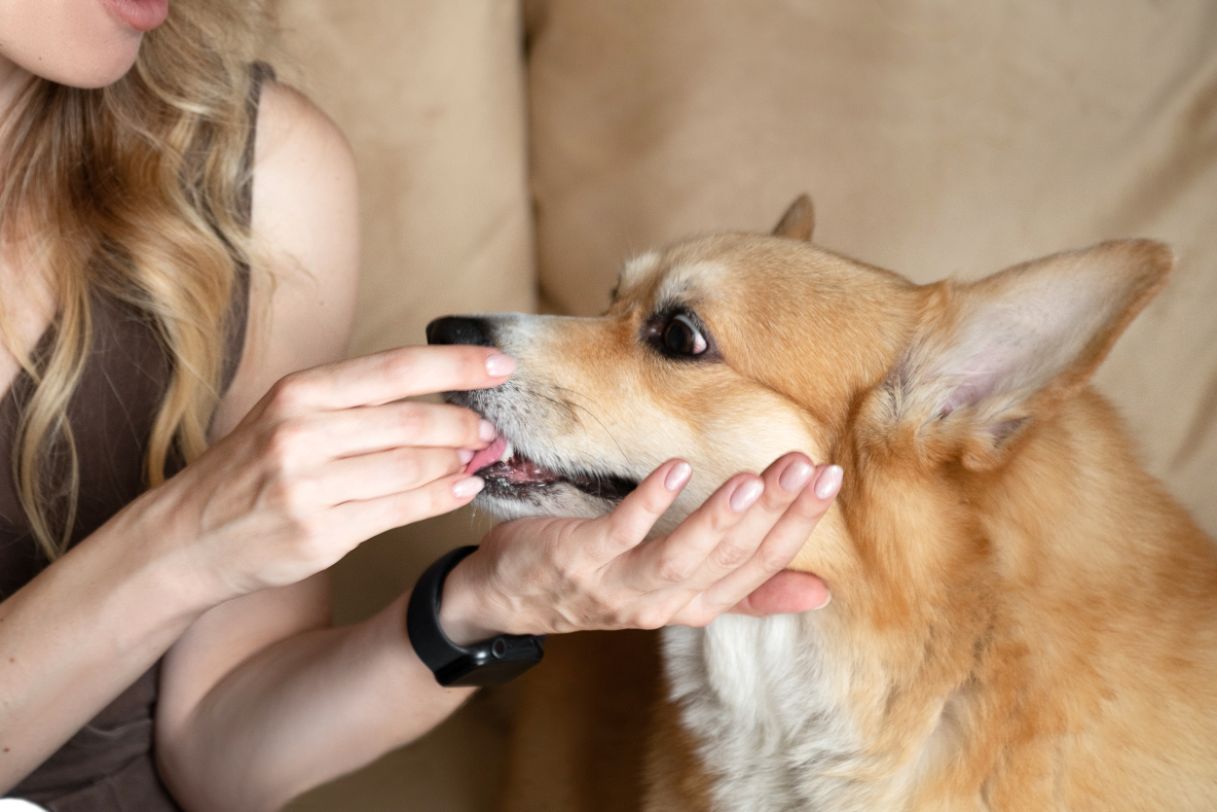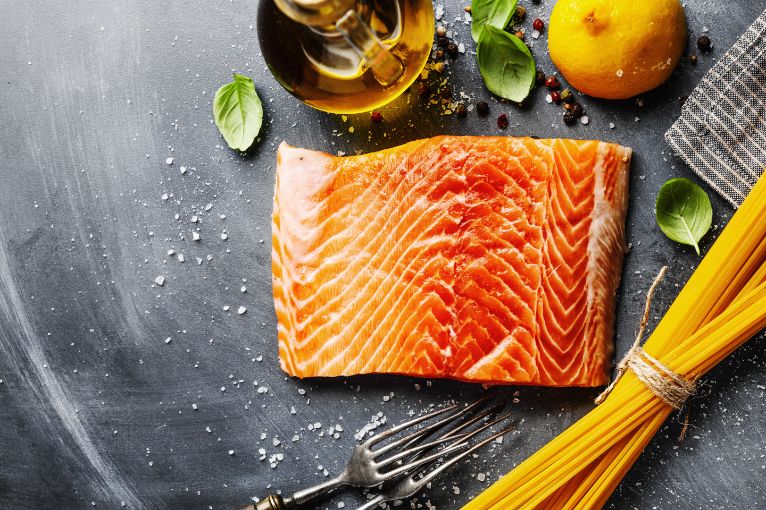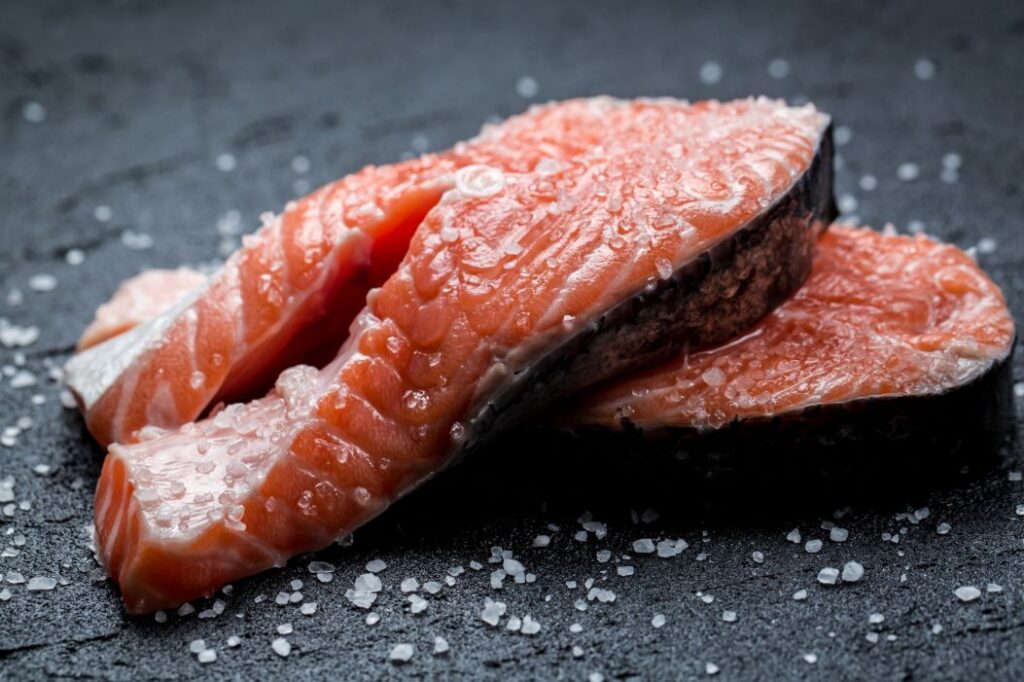Table of Contents
Salmon is a popular human delicacy. Cats enjoy the fish too, as do many other common household pets.
But what about dogs? Can dogs eat salmon?
This article shall attempt to put that question into a better perspective.
Can Dogs Eat Salmon?
The short answer is yes, dogs can comfortably eat salmon.
Dogs are omnivorous pets whose diet leans more towards animal-based foods. The fact that salmon is fundamentally an animal-derived product makes it not only safe but also potentially nutritious for your pooch.
However, salmon is only safe and beneficial to dogs if served in moderation. Giving your dog too much salmon could lead to undesirable consequences.
Besides, salmon may present certain risks to dogs depending on how the fish is prepared and served. Therefore, it’s important to arm yourself with every information there is to know about the safety of salmon for dogs before feeding this fish to your canine friend.
More About Salmon
Salmon is an edible freshwater fish widely considered one of the world’s most nutritious foods. Native to the ocean waters of the Pacific Northwest and Alaska, the fish is prized for its delectable taste and dense nutritional profile. What’s more, there are plenty of ways to incorporate it into your diet.
Taxonomically, salmon belongs to the Salmonidae family. The fish is closely related to the trout, whitefish, grayling, and char.
Salmon’s Nutritional Facts
Like most seafood, salmon’s nutritional value depends on whether the fish is farmed or wild-caught. As you might have guessed, wild-caught salmon varieties provide more nutrients than their farmed counterparts.
A 3.5 ounce (roughly 100-gram) serving of wild salmon offers the following nutrients;
• Calories – 182
• Protein – 25 grams
• Fat – 8 grams
• Thiamine – 23% of the recommended daily value (RDV)
• Riboflavin – 38% of the RDV
• Niacin – 63% of the RDV
• Pantothenic acid – 38% of the RDV
• Vitamin B6 – 56% of the RDV
• Folic acid – 7% of the RDV
• Vitamin B12 – 127% of the RDV
• Selenium – 85% of the RDV
• Phosphorus – 21% of the RDV
How Might Salmon Benefit Dogs?
We’ve just listed some of the core nutrients in a 3.5-ounce serving of wild-caught salmon. It’s worth noting that the mentioned RDV values are based on human consumption. That said, there are numerous ways salmon could benefit dogs too, as discussed below;
1. Salmon May Strengthen Your Dog’s Muscles and Tissues
Both farmed and wild-caught salmon are remarkably high in protein. Protein performs various critical functions in a dog’s body. Most notably, it serves as the building block for tissues, muscles, bones, skin, and even fur.
2. Salmon May Aid Weight Loss
Not only is the high protein content in salmon useful in strengthening your dog’s tissues and muscles. It can also help avert unhealthy weight gain.
When consumed, protein induces the sensations of fullness for much longer. This reduces the number of meals your dog can eat in a day as well as the food portions he can consume in one sitting, ultimately keeping his weight in check.
3. Salmon May Improve Your Dog’s Coat
Salmon is high in omega-3 fatty acids. The fish is particularly rich in the long-chain omega-3 fatty acids eicosatetraenoic acid (EPA) and docosahexaenoic acid (DHA).
Numerous studies have shown that consuming foods rich in EPAs and DHAs might improve the health of a dog’s coat and fur. The compounds also contain powerful anti-inflammatory properties and might cushion your dog from inflammatory conditions, such as arthritis and melanoma.
4. Salmon May Improve Your Dog’s Cardiovascular Health
This is another health benefit of salmon for dogs attributed to the high omega-3 fatty acids in the fish. Consuming omega-3 fatty acids regularly has been shown to boost the function of arterial cells, especially in dogs with cholesterol issues.
Keeping your dog’s arteries in peak performance is a proactive way of managing high blood pressure and related complications like stroke and heart disease.
5. Salmon May Protect Your Dog from Chronic Illnesses
Salmon is high in antioxidants, compounds known to lower the risks of chronic illnesses. Besides omega-3 fatty acids which we’ve already pointed out, salmon also provides decent amounts of astaxanthin.
Astaxanthin is a compound that belongs to the carotenoid family of antioxidants. It’s the substance that gives salmon its signature red color.
Astaxanthins contain anti-inflammatory properties and may work synergistically with other compounds in salmon to combat inflammatory diseases. Certain studies have also cited the compound for its ability to slow down the degeneration of brain and eye cells. Therefore, sharing salmon with your pooch might help fight cognitive and ocular decline.
Other potential benefits of salmon for dogs include;
• Supporting food metabolism
• Aiding DNA synthesis
• Maintaining thyroid function
• Aiding reproductive health
• Boosting blood circulation and clotting processes
How Might Salmon Hurt Your Dog?
a) Salmon May Harbor Pathogens
Raw salmon tends to contain a significant amount of bacteria, including salmonella and E. coli. The fish may also be laden with parasites, such as Neorickettsia helminthoeca.
Ingesting these microorganisms could make your dog sick. The symptoms vary depending on the specific pathogen your pooch has been exposed to and the amount of raw salmon he has consumed.
However, you can almost always expect the following signs;
• Nausea and vomiting
• Diarrhea
• Dehydration symptoms resulting from acute fluid loss, such as dry eyes and thick saliva
• Inappetence
• Rapid weight loss
• Signs of abdominal pain
• Fever
• Weakness and lethargy
• Swollen lymph nodes
b) Salmon May Contain Heavy Metals
Salmon is widely regarded as a low-mercury fish, alongside other popular fish varieties like prawns. However, the relatively low concentration of heavy metals in salmon might still prove harmful to dogs. That’s especially if the fish is fed to them in excess.
Consuming heavy metals may not trigger immediate health complications. But long-term exposure to these compounds could lead to severe organ damage.
c) Salmon May Choke Your Dog
Salmon contains plenty of tiny bones that could easily choke your dog. In fact, the risks of asphyxiation are the reason pet nutritionists recommend feeding deboned fish to dogs.
Besides choking hazards, the sharp bones in salmon might also lacerate your dog’s gum or tongue, causing oral pain. And if ingested, they could lead to internal bleeding or gastrointestinal obstruction.
What Is The Best Way To Serve Salmon To Dogs?
The health benefits of salmon far outweigh the risks. However, there are still certain precautions to take if planning to share this fish with your canine friend.
Here’s how to safely serve salmon to your dog;
i. Rinse the fish
Rinsing mainly eliminates solid debris in salmon.
ii. Debone the fish
After rinsing, slice your salmon open and remove all the bones. This helps minimize choking risks.
iii. Cook the fish
Dogs should never eat raw salmon for obvious reasons. However, it’s also important to choose the right cooking method, such as boiling.
Avoid giving your dog salmon prepared using high amounts of fat, salt, or spices. All these compounds can be detrimental to your dog’s health.
Excess fat might trigger unhealthy weight gain while too much salt could damage your dog’s kidneys. Spices like garlic and onion can cause Heinz-body anemia, a severe disease that damages red blood cells.
iv. Serve the fish
Once ready, slice the salmon into small portions and feed it to your dog in moderation. An ideal serving amount is no more than 100 grams of salmon for every 10 pounds of body weight.
Wrap Up
Salmon can offer numerous benefits to dogs if carefully prepared and moderately served.
As a parting shot, be sure to check with your vet before incorporating salmon or any other seafood into your dog’s diet.





